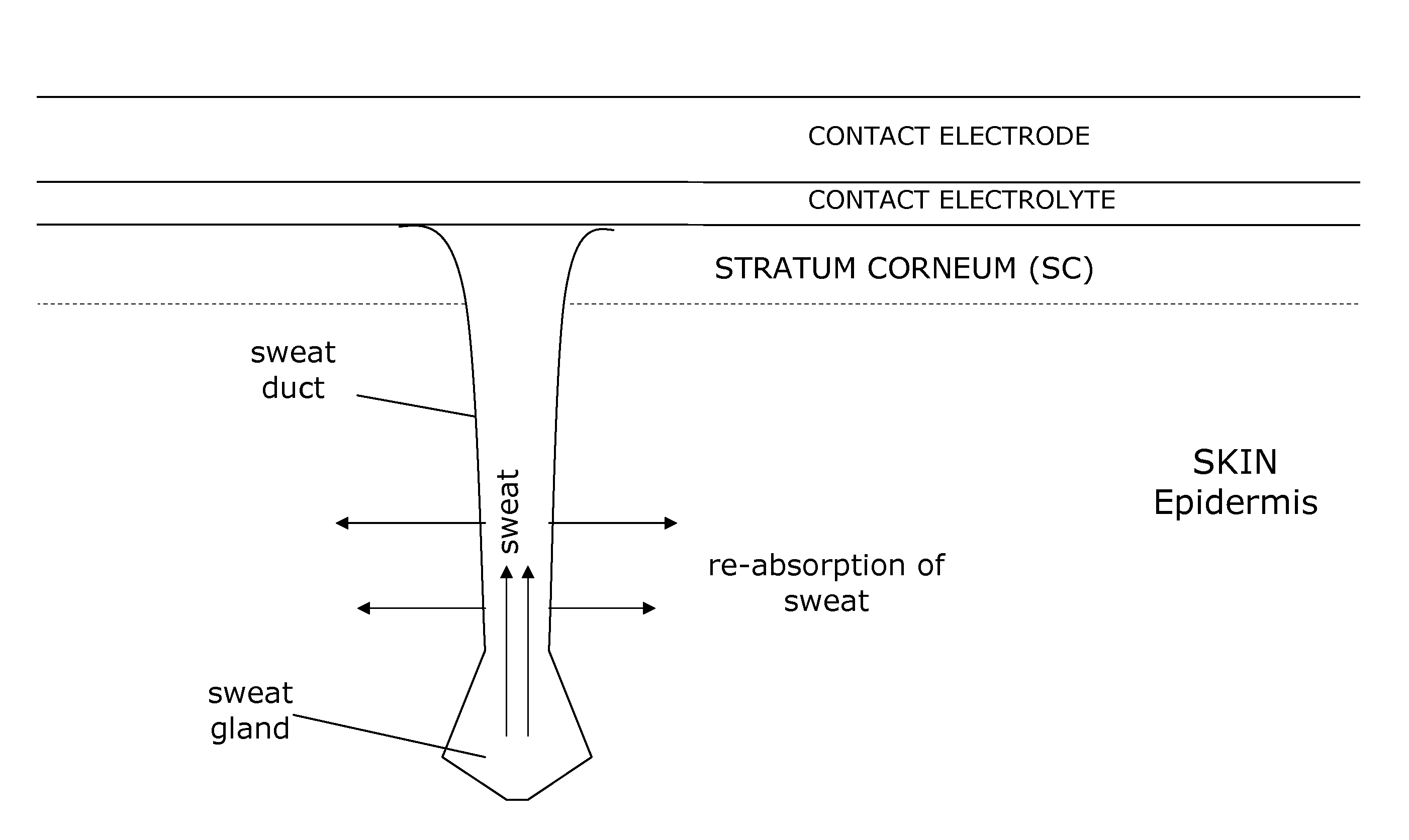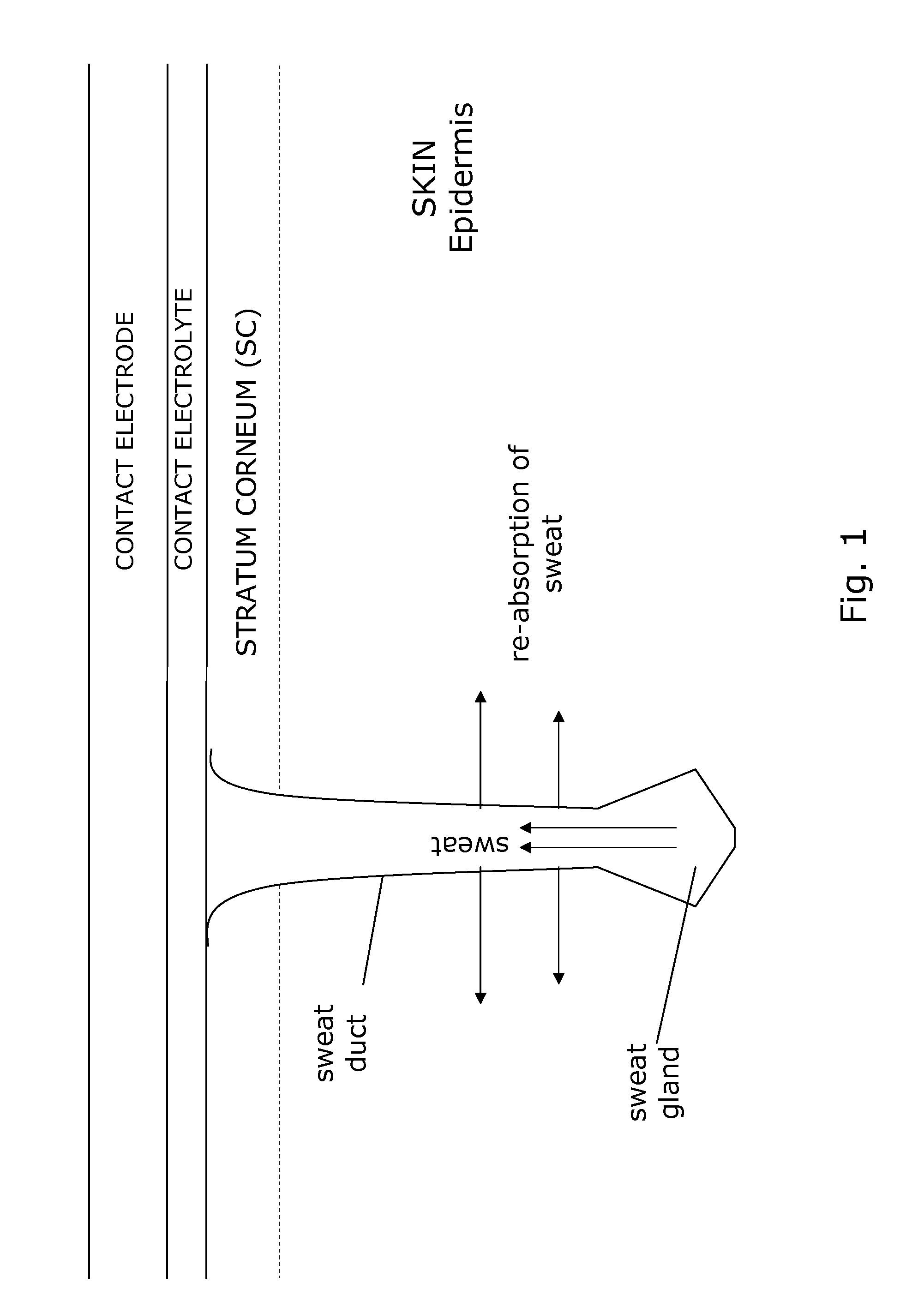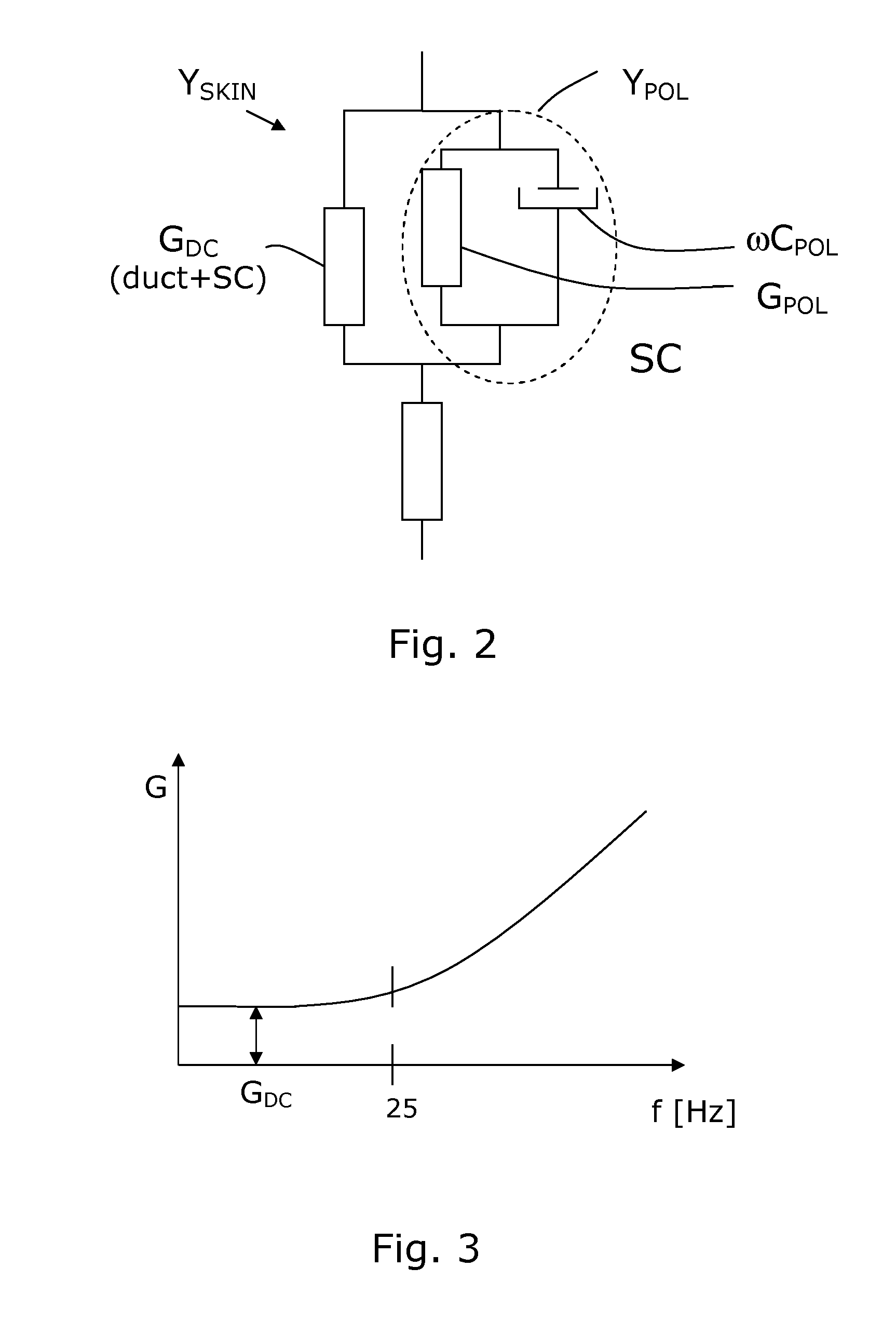Method and kit for sweat activity measurement
a sweat activity and kit technology, applied in the field of sweat activity measurement, can solve the problems of cumbersome or impractical use in ambulatory measurements, inability to provide a reliable measurement of sweat activity in an easy manner, and inability to use ambulatory measurements
- Summary
- Abstract
- Description
- Claims
- Application Information
AI Technical Summary
Benefits of technology
Problems solved by technology
Method used
Image
Examples
Embodiment Construction
[0036]The present inventors have realized that a reliable estimate of sweat activity can be obtained by providing a measure of the degree of filling of the sweat ducts in the skin. In order to explain the invention a short description of the electrical characteristics of the skin is included.
[0037]The skin may be electrically modelled as a poorly conducting stratum corneum layer (SC) shunted by sweat ducts containing a variable amount of well conducting sweat, as illustrated schematically on FIG. 1.
[0038]Each sweat gland and sweat duct has its individual expulsion and re-absorption time scale and an individual refractory period. The average filling of some hundreds of similar sweat ducts is a measure of the sweat activity. All the ducts will never be completely filled, so that there will be no absolute saturation at high sweat activities.
[0039]The filling of a sweat duct represents a conductance increase, but once filled the conductance no longer represents a sweat flow process. The...
PUM
 Login to View More
Login to View More Abstract
Description
Claims
Application Information
 Login to View More
Login to View More - R&D
- Intellectual Property
- Life Sciences
- Materials
- Tech Scout
- Unparalleled Data Quality
- Higher Quality Content
- 60% Fewer Hallucinations
Browse by: Latest US Patents, China's latest patents, Technical Efficacy Thesaurus, Application Domain, Technology Topic, Popular Technical Reports.
© 2025 PatSnap. All rights reserved.Legal|Privacy policy|Modern Slavery Act Transparency Statement|Sitemap|About US| Contact US: help@patsnap.com



